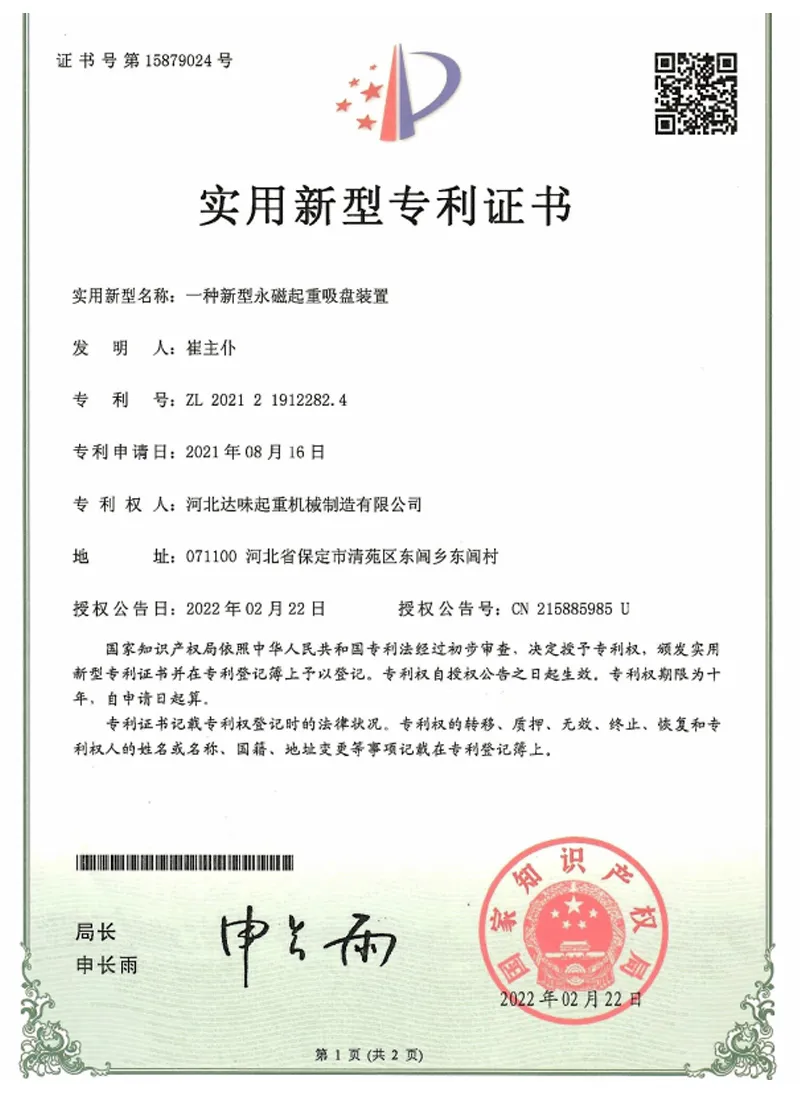Modern Hoist Gantry Crane Enhancing Efficiency in Industrial Applications
Understanding Hoist Gantry Cranes A Comprehensive Overview
Hoist gantry cranes are essential pieces of equipment in various industries, known for their efficiency in lifting and transporting heavy loads. These cranes are particularly useful in manufacturing, construction sites, shipping yards, and warehouses where space constraints might preclude the use of traditional overhead cranes. This article provides a detailed examination of hoist gantry cranes, their design, functionality, and applications.
Design and Structure
A hoist gantry crane typically consists of a beam that is supported by two vertical legs, which are mounted on wheels or track systems. This design allows the crane to move across a defined path, making it particularly versatile. The gantry is equipped with a hoist that can lift, lower, and move loads vertically and horizontally. The hoist mechanism is usually powered by electric motors, ensuring smooth and controlled operation.
The height and span of a hoist gantry crane can be customized to meet the specific needs of a workspace. For instance, some cranes may feature adjustable heights or rails to accommodate varying load sizes and facility dimensions. Moreover, the materials used in constructing these cranes are often high-strength steel or aluminum, providing durability and reliability over time.
Functionality
The primary function of a hoist gantry crane is to automate the lifting and moving of heavy materials. This is crucial in environments where manual lifting would be impractical or unsafe. Their operating mechanism can be wired or wireless, with operators controlling the crane using remote controls or pendant controls, enhancing safety and efficiency in operations.
Hoist gantry cranes can handle loads ranging from a few hundred kilograms to several tons, depending on their design. The hoisting mechanism typically includes hooks, clamps, or specialized attachments that can be tailored to fit different types of loads, whether they are standardized containers or unique oversized components.
hoist gantry crane

Applications
Industries that benefit from hoist gantry cranes are diverse. In manufacturing, these cranes are prevalent on assembly lines where components need to be lifted and repositioned. In the shipping industry, they facilitate the loading and unloading of cargo containers from trucks and ships, enabling quicker turnaround times. Construction sites also utilize gantry cranes for moving materials like steel beams, concrete blocks, and heavy machinery parts, significantly enhancing productivity and worker safety.
Additionally, logistic companies and warehouses employ hoist gantry cranes for stock management, allowing efficient movement of products within the facility. Their advantage lies in reducing the time and labor required to handle heavy loads, thereby minimizing potential workplace injuries.
Advantages
One of the key advantages of hoist gantry cranes is their flexibility. They can be used both indoors and outdoors, making them suitable for a range of applications. Their mobility allows them to be relocated as needed, providing solutions tailored to dynamic work environments.
Moreover, these cranes require minimal installation infrastructure compared to traditional cranes, which often need extensive building modifications. As a result, they can be a more cost-effective solution for businesses looking to enhance their material handling capabilities.
Conclusion
Hoist gantry cranes represent a critical innovation in the field of material handling. Their ability to efficiently lift and transport heavy loads across various industries has transformed operational efficiency and safety standards. As technology continues to advance, we can expect further enhancements in the design and functionality of these cranes, solidifying their place as indispensable equipment in the modern industrial landscape.
-
Unlock Seamless Relocation with Our Heavy Equipment Moving ExpertiseNewsJun.06,2025
-
Unleash Unrivaled Flexibility with Our Adjustable Gantry CraneNewsJun.06,2025
-
Unleash Heavy-Duty Efficiency with Our Industrial Gantry Crane SolutionsNewsJun.06,2025
-
Revolutionize Steel Handling with Our Magnetic Lifter RangeNewsJun.06,2025
-
Master Equipment Mobility with Premium Machinery Mover SolutionsNewsJun.06,2025
-
Elevate Your Material Handling with Magnetic Lifter TechnologyNewsJun.06,2025
-
YS Permanent Lifting Magnets: The Smarter Way to Handle SteelNewsMay.22,2025
